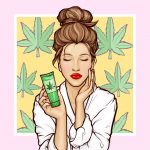Hydrotherapy- Part 3
JAMES SENSENIG, ND
LETITIA DICK-KRONENBERG, ND, VNMI
This column is transcribed from a weekly live conversation produced by the Naturopathic Medical Institute (NMI). The goal of NMI is to preserve and promote the principles of naturopathic philosophy through clinical application, in your offices and in your communities, every day. This lightly edited transcript (by Emily Kane, ND) is the third part of a 4-part conversation between Drs Jim Sensenig and Letitia Dick-Kronenberg, which took place on September 13, 2017.
Nuances to the Therapy
Dr Sensenig: Thank you for outlining those detailed instructions for the constitutional hydrotherapy treatment. Is the protocol the same for everyone? Because we’re all different, I’m assuming there are some exceptions to the rule.
Dr Dick-Kronenberg: Yes! I had mentioned that the patient is usually covered with a towel, from the collarbone to the hips. But there might be situations where you wouldn’t do that. An example is a patient who has a compression pack on her chest because she’s just had breast surgery, or she just got breast implants, or maybe she just had surgery for cancer. In that case, just treat the belly. Also be aware of patients who have ports because the patient doesn’t want to get it wet. In this case, use little Ziploc bags or Saran Wrap with paper tape to cover whatever area they need to keep dry. Then continue with the therapy, extending the towel from collarbone to hips. You may have to switch the treatment a bit depending on what you need to do, but most of the time you’re going to be able to cover collarbone to hip with the towels.
Chilly patients may simply need more blankets. This can include patients who have very little body heat or body fat. Some patients are hypothyroid and their body temp is always low. For these patients, don’t put hot towels on their feet or on their head, as that would totally change the effect of what you’re trying to do with the hot and cold flux through the vital organs.
Dr Sensenig: What about patients who want a lighter blanket?
Dr Dick-Kronenberg: The weight of the wool blanket is important because that weight really holds the towels down on the skin. For this reason, you’ll get a better action with heavy wool blankets over the patient.
I have some patients who only want the lightweight blankets, not the wool, over the top. But even in the summertime, I say, “No! You’re going to get the heavy blanket because I need you to sweat.” So, sometimes, because the heat can be uncomfortable, you have to negotiate with your patient! The heating is just part of the therapy; you need to have that happen.
Be sure the cold towel has warmed to body temperature in the center of the towel before removing it.
You need to know if the patient isn’t warming the towel. Usually, the warming happens within the first few therapies. After about 3 to 5 treatments, the body starts heating those towels up. Some people may need an extra 2 minutes to warm the towel. In this case we just put an extra blanket on them and let them stay for 2 more minutes to “cook.” Then take it off. If they haven’t warmed up the towel by then, they’re not going to. Just move on with the therapy. If you do leave the cold towel on longer, it will chill them because their vitality isn’t strong enough to warm it. For thin or fragile people, use thinner towels. More-worn-out towels that have accumulated over the years work well for this. Still use 2 layers; just use thinner towels. We want the thin, fragile patient to warm it up. Don’t let it be a struggle that their body can’t do it right now. As their vitality increases, you can start using the regular thickness of towels.
Tips for Home & Clinic
Dr Sensenig: Naturopathic doctors often tell their patients to do hydrotherapy at home. What tips can you offer for these cases?
Dr Dick-Kronenberg: One important tip for home hydrotherapy is to not overdo the cold. Don’t put the cold towel in the freezer. Don’t throw it out in a snowbank to make it extra cold. Don’t use ice water. Cold tap water (about 40 degrees °F) is plenty cold enough in the Pacific Northwest. In warmer climates, you will have to cool the water down. The water shouldn’t be icy-cold, since the purpose is to warm it up.
It’s also important to not wrap the patients. It’s not the mummy wrap or the burrito wrap. Those methods came from the Seventh Day Adventist Hot Fomentation Treatment but have never been part of naturopathic constitutional hydrotherapy. Unfortunately, that wrapping technique got adopted and put into our school curriculums.
What you prescribe for patients to do at home is going to be different than what you’d do in the clinic. But they’re both based off of the same heating compress concepts. It’s really vital to know the patient’s body temperature, as that will guide you to what therapies are most appropriate.
Dr Sensenig: Any additional recommendations for doing these therapies in the office?
Dr Dick-Kronenberg: Yes. Here’s how we do it:
- Allow the patient’s hands to be free
- The towels and blankets are just laid on them; they’re not wrapped around them. That way, you don’t get a chilling effect from a wet sheet that got wet from the towels and is now being wrapped over them. This would change the effect of the therapy. The treatment is not as effective when there’s dampness that is allowed to chill the patient.
I also don’t use sheets.
- We have the patient change into a flannel gown. Like a big kimono, it has big armholes.
- The patient lies on the therapy table, so they’re not chilled on the leather Naugahyde on the table
- The gown is parted just enough in the front for me to listen to the heart tones of the patient. If it’s a woman, I don’t expose her whole breast. When the therapy tech comes, she moves the gown to 1 side at a time to put the towels on the patient. The patient’s chest is never exposed. This makes them feel more comfortable. When they’re ready to turn over to do the therapy on their back, we have them pull their arms out of that gown and leave the gown down on the table to function as their sheet.
- They have the warm flannel that’s already been laid down; they’re not chilling at all. While on their back, we apply the hot and cold sequence with the towels over the top. That keeps the table sterile. They’ve used their own gowns, which get washed that day.
That’s how we approach it. That’s how Dr Carroll did it as well.
This column, based on the Vital Conversations of the Naturopathic Medicine Institute, will continue in next month’s NDNR.

James Sensenig, ND was a 1978 graduate of NCNM in Portland, OR. For over 40 years he maintained an eclectic practice in Hamden, CT. Over the years, Dr Sensenig held prominent positions in the various naturopathic colleges and the AANP. A champion of classical naturopathic medicine, Dr Sensenig received an Honorary Doctor of Naturopathic Philosophy degree from CCNM, and received numerous awards for his dedication to teaching the principles of naturopathic medicine.

Letitia Dick-Kronenberg, ND, VNMI earned her doctorate in Naturopathic Medicine in 1990 from NCNM. She then completed a 3-year residency with her late father, Dr Harold Dick. After his passing, she continued his classical naturopathic clinic in Spokane, WA, now over 60 years old. Dr Letitia has been in practice 31 years; is past adjunct faculty at Bastyr University; co-founder of the Carroll Institute of Natural Healing (a non-profit, post-graduate institute teaching the healing methods of Dr Otis G. Carroll); author of The Ultimate Text In Constitutional Hydrotherapy: A 100 Year Tradition of Clinical Practice; founder and senior Vitalist of the NMI; and an international speaker / medical educator.









